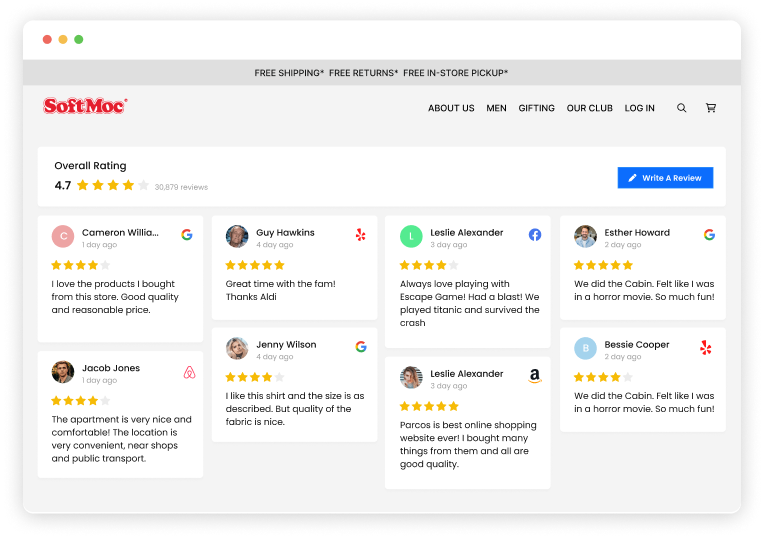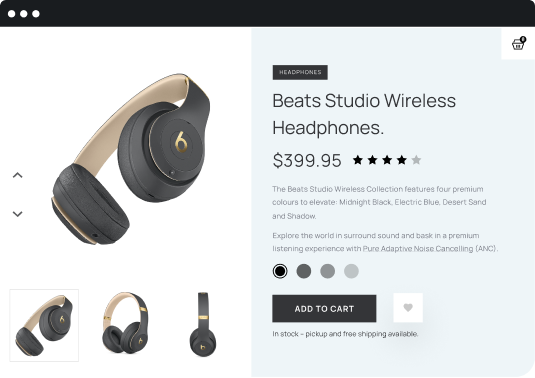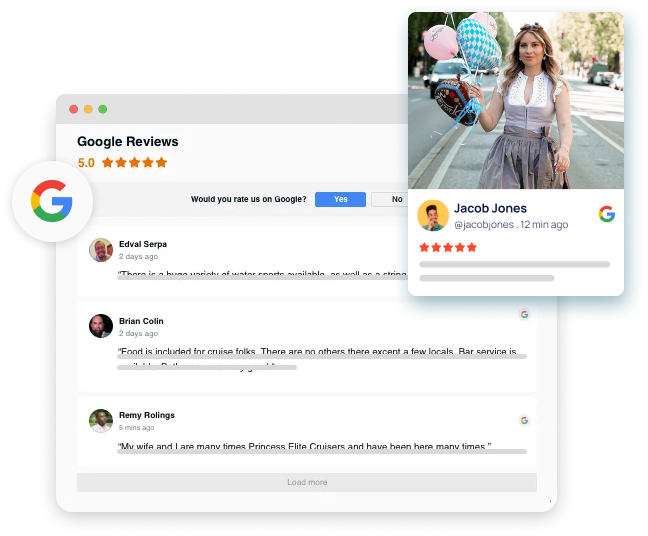How Online Reviews Influence Consumer Purchase Decision
Thanks to the internet, information and convenience are now within reach. Whether you want to learn about the Roman Empire or book a ticket for a Coldplay concert, the answer and opportunity are just a click away. This ease also brings comfort to consumers.
Reviews provide the convenience of making decisions based on ratings and reviews. Gone are the days when consumers relied on commercials to get information on any product. Consumers can now read online reviews, and it is safe to say that reviews influence consumer purchase decisions.
The Psychology of Online Reviews
Reviews influence customer’s purchasing decisions not only because they provide information but also because they tap into fundamental human behavior.
1. Social Proof
Social proof is a psychological phenomenon in which people tend to copy the actions of others in certain situations. It is closely tied to the bandwagon effect, where people are likelier to adopt something if others do the same.

Reviews and ratings work as social proof. For example, a mobile phone with thousands of positive reviews shows that many people are buying it and giving positive feedback. Potential customers would be more likely to buy that phone than a product with fewer or mixed reviews.

2. Trust and Credibility
Consumers are often skeptical about the product they are about to purchase, primarily online, as they cannot physically examine it. Positive reviews provide validation to potential customers. Humans consider that customers who are currently using the product can provide a better assessment of it.
So, positive reviews from current users help potential customers trust the product. A product with more positive reviews is perceived as more trustworthy.

Businesses are now flaunting their reviews to build trust and credibility. They either embed reviews on their websites or integrate a review section where they showcase their products. Ratings & reviews platform to make it easy for brands to display reviews on their website.
3. Risk Aversion
Purchasing a product, primarily online, always carries an element of risk for customers. The risk is whether the product will meet expectations, function as described, or arrive on time.
Online reviews provide a safety net for customers, reducing the risk as potential customers get insight into present buyers.
For example, if a product with many negative reviews raises a red flag against the product, it will make customers rethink their purchase decision.
4. Information Gathering
Beyond social proof and risk aversion, online reviews are also a source of information for buyers. By reading reviews, customers can better understand the product and learn about its use cases.
For example, a consumer reading a cafe’s reviews might learn about the best dish. Thus, reviews help consumers assess the cafe’s credibility and provide additional information.
Statistical Insights: How Reviews Impact Purchases
In addition to psychological factors, statistics provide concrete evidence that reviews influence purchase decisions.
- Reviews are a priority: More than 99% of consumers say they read reviews sometimes, while 91% read them regularly. This highlights how consumers have started prioritizing reviews before making their purchasing decisions.
- Trust that counts: 84% of customers trust reviews, which helps them make decisions and assists businesses in building credibility.
- Conversion rate: Products with positive reviews experience a 270% increase in purchase likelihood compared to those with no reviews, while businesses with 4-star ratings generate 32% more revenue than those with lower reviews.
- Putting an impact: 93% of consumers say reviews influence purchase decisions. That makes reviews a considerable part of a consumer decision-making process.
- Influence on local businesses: 87% of customers read online reviews for local businesses.
- Negative reviews affect sales: Studies show that a single negative review can drive away 22% of customers, while three negative reviews drive away 59%.
- Recency plays a vital role: 73% of customers only trust reviews written in the last month.
Different Types of Online Reviews and Their Impact
When we talk about reviews, they are distributed in different kinds, each having its purpose, importance, and impact. We can bifurcate them into:
1. Product Reviews:
Product reviews are written or virtual evaluations of products by current users or experts. They describe the product’s features, qualities, and performance. For example, in a smartphone review, users mention the camera quality, battery life, or user interface, helping other consumers gain insight into the product.

Product reviews help potential buyers make informed decisions as they learn about product usage. Positive reviews assure the purchase decision and build trust, while negative ones discourage buyers and force brands to improve.
It is helpful for brands as they learn about their product’s reception in the market. Approving reviews tell them about their positives, while negative reviews help them determine what to work on. Also, addressing negative feedback helps brands establish a solid connection with their customers.

2. Service review
A service review assesses a company’s service quality, professionalism, and responsiveness through written or visual feedback. In these reviews, consumers share experiences such as how quickly an issue was addressed, how friendly the staff was, or how effectively the service met expectations.

For example, in a restaurant review, consumers might discuss the speed of service or cleanliness.
These reviews help shape the reputation of businesses, restaurants, and service providers. Positive service reviews can attract new customers by creating a perception of reliability and care, while negative reviews can push potential clients away.
3. Business Reviews
Business reviews provide an overall assessment of a company’s reputation, trustworthiness, and reliability. Unlike product or service reviews, they provide a 360-degree view of the brand within the customer experience framework, ethical practices, or service continuity.

For example, they might discuss how a corporation tackled a serious issue or constantly maintained quality over the years.
Such reviews can profoundly impact brand perception and customer trust. They can compel customers to trust the business and encourage them to do business with it—negative reviews ruin brands. Companies with a good plan for dealing with positive and negative reviews can improve their loyalty.

Best Marketing Touchpoints to Display Customer Reviews
Even businesses must understand the impact reviews have on their performance; hence, they should display it in various marketing touchpoints. These touch points consist of:
1. Website
Consumers often visit brand websites to learn more about the product. By displaying reviews on the website, brands can build credibility and influence consumer purchase decisions. Adding reviews on the website using code or screenshots can turn out complex and hinder website speed. Hence, we have tools like Tagshop.

Using Tagshop, brands can easily embed reviews on the website by following simple steps without affecting the website’s speed. Alongside making embedding simple, the tool has a shoppable feature, which means consumers can read about the reviews and add the product to the cart without leaving the screen.

2. Social Media
Social media has become essential to marketing, as it promises a vast audience. For businesses, huge audiences mean an excellent opportunity to gather more customers. Businesses can win customers’ trust by displaying reviews on their social media handles.

Moreover, customers feel recognized when a brand posts user-generated content for that particular customer, helping build a brand-customer relationship. This also encourages other customers to post and enjoy their limelight.
3. Email Marketing
Newsletters and emails are great ways to connect with potential customers and showcase products and services. When marketing products through emails, businesses showcase reviews in the emails, helping readers learn more about the products and make their own decisions.
4. Paid Advertising
Inserting customer reviews into paid ads is one decisive way to build credibility. Whether a Google ad containing a five-star review or a video testimonials, this strategy helps to build authenticity. Ads with positive reviews feel more persuasive and relatable.
5. In-Store Experiences
Displaying reviews in the store enhances the customer experience. Businesses should consider using digital displays to showcase customer feedback or print snippets on posters. This feedback reminds customers about the brand and product.
6. Packaging and Product Inserts
Sometimes, small marketing efforts can have a significant impact and work for brand goodwill, like inserting a small thank you note or note of reviews in the packaging.
In more modern fashion, brands often send a QR code with the packaging that customers can scan to read the reviews of the product they purchased, reassuring them about their purchase.
7. Video Marketing
Videos bring reviews to life. Whether it’s customers sharing their own experiences or behind-the-scenes of how a problem is solved, video content feels personal. And as we all know, videos are certainly more engaging.
Hence, there is more chance customers will sit throughout. Brands often share these reviews on video-sharing platforms like YouTube or Vimeo.

Conclusion
Online reviews have indeed transformed the way consumers make their decisions. With reviews now available just a click away due to the internet, brands can get valuable feedback and social proof. On the other hand, businesses can now flaunt their credibility with online reviews. Whether you’re a consumer or a business owner, understanding the power of online reviews is essential for navigating today’s interconnected world.
Frequently Asked Questions
Many factors influence consumer purchasing decisions, but a few do not, like outdated advertising and brand loyalty. Over the years, we have seen consumers loyal to brands and often purchase them without evaluating them.
Firstly, the buying process for consumers is less complex and involves fewer stakeholders. Businesses conduct extensive research, negotiate contracts, and assess long-term value as they involve various stakeholders.
Additionally, consumer purchases are often lower in cost and involve less risk than business procurement decisions, which require thorough evaluation.






